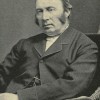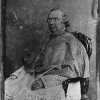
Kimberly J. Stern, “The Publication of John Pentland Mahaffy’s The Decay of Modern Preaching (1882)”
This contribution to BRANCH documents the historical and biographical conditions surrounding the publication of John Pentland Mahaffy’s controversial volume The Decay of Modern Preaching (1882). Although often deemed to be a secular or even heretical thinker, Mahaffy emerges here as a thoughtful scholar of religion standing at the crossroads of faith and reason. In the years preceding the publication of The Decay of Modern Preaching, Mahaffy witnessed a number of changes at Trinity College Dublin that threatened the principles he deemed essential both to good preaching and to intellectual culture more broadly. Mahaffy’s views on intellectual work and religion were mutually sustaining, a fact that helps to enrich our understanding of this important text, its troubled reception in the nineteenth century, and the evolving narrative of nineteenth-century faith.

Miriam Burstein, “The ‘Papal Aggression’ Controversy, 1850-52”
This article provides an overview of the political, religious, and cultural response to the restoration of the Roman Catholic hierarchy in England. The Vatican’s decision to go ahead with this bureaucratic change was misunderstood in England, with immediate and unexpected consequences. Protestants across a wide range of denominations reacted harshly to the announcement, with repercussions not only for Catholics, but also for the Oxford Movement in the Church of England itself.

Barbara Charlesworth Gelpi, “14 July 1833: John Keble’s Assize Sermon, National Apostasy”
This essay outlines the personal interactions and political events preceding John Keble’s delivery of a sermon later entitled National Apostasy to the judges gathered at Oxford for the Assize Court as a way of understanding the sermon’s significance in relation to the Oxford Movement.
